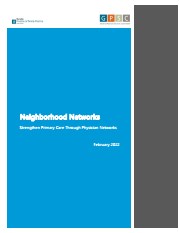4 public records – page 1 of 1. — Log in to view all records
Accessing Treatment: What do Providers Experience? - Info Graphic
https://www.jcc-resourcecatalogue.ca/en/permalink/divisionresource1464
- Published Date
- 2017
- Description
- "A high-level visual illustration of the provider’s perspective into the many ways people can access treatment for substance use."
- Corporate Author
- Ministry of Mental Health and Addictions
- First Nations Health Authority
- General Practice Services Committee
- Ministry of Health
- BC Patient Safety & Quality Council
- Published Date
- 2017
- Topics
- Primary Care
- Community / Patient Navigation
- Community Resources
- Adverse Childhood Experiences
- Children and Youth
- Mental Health and Substance Use
- Resource Type
- Info Graphic
- File Type
- Description
- A high-level visual illustration of the provider’s perspective into the many ways people can access treatment for substance use.
Patient Overdose in Park: what do providers experience? - Info Graphic
https://www.jcc-resourcecatalogue.ca/en/permalink/divisionresource1465
- Published Date
- 2017-11-01
- Link to File
- https://bcpsqc.ca/wp-content/uploads/2018/03/Provider-Map-Overdose-in-Park-Case-Study.pdf
- Description
- "Visual illustration of the experiences of various providers when a patient with a substance use overdose moves through the emergency and acute care health systems."
- Corporate Author
- Ministry of Health
- Ministry of Mental Health and Addictions
- General Practice Services Committee
- First Nations Health Authority
- BC Patient Safety & Quality Council (BCPSQC)
- Published Date
- 2017-11-01
- Resource Type
- Info Graphic
- File Type
- Link to File
- https://bcpsqc.ca/wp-content/uploads/2018/03/Provider-Map-Overdose-in-Park-Case-Study.pdf
- Description
- Visual illustration of the experiences of various providers when a patient with a substance use overdose moves through the emergency and acute care health systems.
Primary Care Case Study: Provider Experiences - Info Graphic
https://www.jcc-resourcecatalogue.ca/en/permalink/divisionresource1466
- Published Date
- 2017-11-01
- Link to File
- https://bcpsqc.ca/wp-content/uploads/2018/03/Provider-Map-Primary-Care-Clinic-Case-Study.pdf
- Description
- "Visual illustration of the steps, considerations and feelings of providers when someone with substance use presents at a primary health care clinic or family physician’s office."
- Corporate Author
- Ministry of Health
- BC Patient Safety & Quality Council (BCPSQC)
- Ministry of Mental Health and Addictions
- General Practice Services Committee
- First Nations Health Authority
- Published Date
- 2017-11-01
- Resource Type
- Info Graphic
- File Type
- Link to File
- https://bcpsqc.ca/wp-content/uploads/2018/03/Provider-Map-Primary-Care-Clinic-Case-Study.pdf
- Description
- Visual illustration of the steps, considerations and feelings of providers when someone with substance use presents at a primary health care clinic or family physician’s office.
Burnaby DoFP Neighbourhood Networks Case Study - Executive Summary
https://www.jcc-resourcecatalogue.ca/en/permalink/divisionresource1605
- Division
- Burnaby Division of Family Practice
- Published Date
- 2022-02
- Description
- "This document is the executive summary of the Burnaby DoFP Neighbourhood Networks case study. As part of GPSC commitment to the development of physician networks as a key component of primary care system change, the Burnaby DoFP Neighborhood Network case study explores the development and implementation of three neighborhood networks in Burnaby. The creation of neighborhood networks in Burnaby was prompted by family physicians who recognized the need to bring together family physicians from across local communities to increase their interconnectedness, provide opportunities for local Primary Care Network planning, and enable methods for sharing care with each other with the goal of improving patient access to medical care across Burnaby. Burnaby’s neighborhood networks have supported family physicians to connect socially, learn from each other, identify options for locum coverage and after-hours care, and support referrals to specialist care throughout the networks. Key outcomes: family physicians were able to increase patients’ access to care by referring patients to their family physician peers, expanding their use of locums, working on the development of an Urgent and Primary Care Clinic, and procuring additional healthcare resources for the neighborhood networks. A discussion of the neighborhood network's future goals and next steps is included."
- Division
- Burnaby Division of Family Practice
- Corporate Author
- General Practice Services Committee
- Published Date
- 2022-02
- Resource Type
- Summary
- File Type
- Description
- This document is the executive summary of the Burnaby DoFP Neighbourhood Networks case study. As part of GPSC commitment to the development of physician networks as a key component of primary care system change, the Burnaby DoFP Neighborhood Network case study explores the development and implementation of three neighborhood networks in Burnaby. The creation of neighborhood networks in Burnaby was prompted by family physicians who recognized the need to bring together family physicians from across local communities to increase their interconnectedness, provide opportunities for local Primary Care Network planning, and enable methods for sharing care with each other with the goal of improving patient access to medical care across Burnaby. Burnaby’s neighborhood networks have supported family physicians to connect socially, learn from each other, identify options for locum coverage and after-hours care, and support referrals to specialist care throughout the networks. Key outcomes: family physicians were able to increase patients’ access to care by referring patients to their family physician peers, expanding their use of locums, working on the development of an Urgent and Primary Care Clinic, and procuring additional healthcare resources for the neighborhood networks. A discussion of the neighborhood network's future goals and next steps is included.

